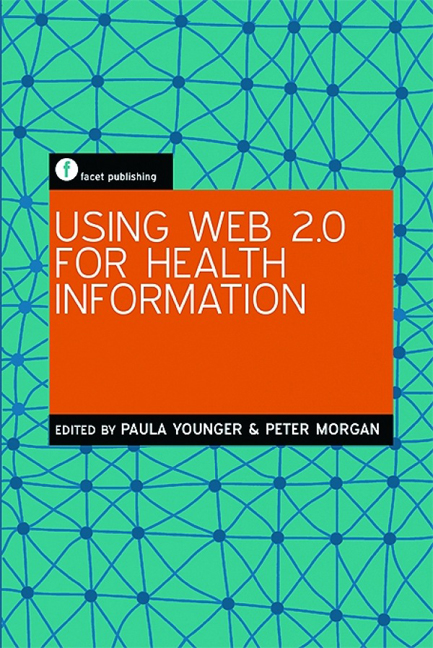Book contents
- Frontmatter
- Contents
- Preface
- Acknowledgements
- Contributors
- Glossary
- Introduction
- Part 1 The basics
- 1 Health information: an overview
- 2 Web 2.0 in healthcare information: an overview
- Part 2 Web 2.0 and the implications for health information
- Part 3 Web applications in health information provision: some practical examples
- Part 4 The future
- Index
2 - Web 2.0 in healthcare information: an overview
from Part 1 - The basics
Published online by Cambridge University Press: 08 June 2018
- Frontmatter
- Contents
- Preface
- Acknowledgements
- Contributors
- Glossary
- Introduction
- Part 1 The basics
- 1 Health information: an overview
- 2 Web 2.0 in healthcare information: an overview
- Part 2 Web 2.0 and the implications for health information
- Part 3 Web applications in health information provision: some practical examples
- Part 4 The future
- Index
Summary
In the beginning … a brief history of the internet
Although the internet as we know it is relatively young, having existed in its current form since about 1995, the concept of a connected network of information and linked ideas has been around for at least 60 years (Bush, 1945). Physicians were highlighted, in particular, as a group who would find the ‘memex’ extremely useful. During the 1960s to the 1980s, what we now know as the world wide web continued to develop, incorporating e-mail and early webcams and, more recently, the participatory software and virtual environments that form the backbone of what can be termed ‘Web 2.0’.
In 1990, Tim Berners-Lee and CERN implemented a hypertext system with the aim of providing efficient and timely information to the research community. Two implicit aims of the internet, linking community and improving the availability of information, were apparent in the system's creation.
Since it first took form in the early 1960s, the internet has evolved at an exponential rate. In 1994 there were just over 20 million users worldwide; by 2009 there were over 1.5 billion (World Bank, 2010). In the mid 1990s, what we now know as the world wide web first took form, and it has since become the information tool of choice for many. In the process, the internet has changed society and the ways in which we interact beyond all recognition (Naughton, 2006).
The mid 1990s were a clear turning point. What had been a specialized, text-based information environment became transformed into a more accessible and interactive platform. The first sale on Echo Bay's Auction Bay, precursor of eBay, occurred in 1994 (Collins, 2010). Crucially, 1996 saw the first web-based free e-mail service, Hotmail (Sharma, 2009), changing the way in which we communicate for ever. In 1994, graphical web browsers as a whole, which make the internet as we now know it so accessible and interactive, were still in their infancy: the current search engine favourite, Google, was still four years away (Boulton, 2009). Now that we live in a world of potential constant connectivity and mobile multimedia ‘on demand’, the early years of the internet seem charmingly primitive.
- Type
- Chapter
- Information
- Using Web 2.0 for Health Information , pp. 9 - 26Publisher: FacetPrint publication year: 2011



